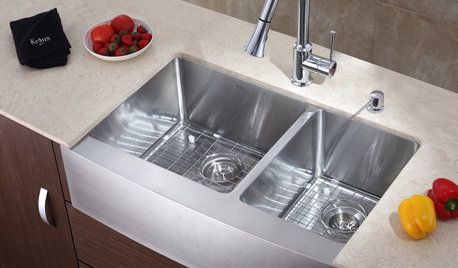Sears Kohler 22 V-Twin CV22S engine wont stayrunning
cmt1
14 years ago
Related Stories

DESIGN DETAILSThe Secret to Pocket Doors' Success
Pocket doors can be genius solutions for all kinds of rooms — but it’s the hardware that makes all the difference. See why
Full Story
REMODELING GUIDESLaminate Floors: Get the Look of Wood (and More) for Less
See what goes into laminate flooring and why you just might want to choose it
Full Story
FURNITURESmart Shopper: How to Buy a Mattress
Confusing options, hair-raising prices, haggling ... Our guide can keep you from losing sleep over mattress shopping
Full Story
REMODELING GUIDESWhat to Know About Budgeting for Your Home Remodel
Plan early and be realistic to pull off a home construction project smoothly
Full Story
FUN HOUZZDon’t Be a Stickybeak — and Other Home-Related Lingo From Abroad
Need to hire a contractor or buy a certain piece of furniture in the U.K. or Australia? Keep this guide at hand
Full Story
MOST POPULAR8 Little Remodeling Touches That Make a Big Difference
Make your life easier while making your home nicer, with these design details you'll really appreciate
Full Story
KITCHEN DESIGNStay Cool About Picking the Right Refrigerator
If all the options for refrigeration leave you hot under the collar, this guide to choosing a fridge and freezer will help you chill out
Full Story
LAUNDRY ROOMSSoak Up Ideas From 3 Smart Laundry Rooms
We look at the designers’ secrets, ‘uh-oh’ moments and nitty-gritty details of 3 great laundry rooms uploaded to Houzz this week
Full Story
PETSHouzz Call: Send in the Design Cats
Post your best photo of your cat at home, in the garden or with you in your studio. It could be published in a featured ideabook
Full Story
SMALL SPACESDownsizing Help: Storage Solutions for Small Spaces
Look under, over and inside to find places for everything you need to keep
Full StorySponsored






cmt1Original Author
rcbe
Related Professionals
Tempe Landscape Architects & Landscape Designers · Wrentham Landscape Architects & Landscape Designers · Garden City Landscape Architects & Landscape Designers · Graham Landscape Architects & Landscape Designers · Brentwood Landscape Contractors · Gainesville Landscape Contractors · Lakeland Landscape Contractors · Mesa Landscape Contractors · Norristown Landscape Contractors · Petaluma Landscape Contractors · Rochester Landscape Contractors · Santa Maria Landscape Contractors · Siloam Springs Landscape Contractors · Wanaque Landscape Contractors · Coconut Grove Window Contractorsmownie
cmt1Original Author
cmt1Original Author
cmt1Original Author
mownie
cmt1Original Author
mownie
cmt1Original Author
cmt1Original Author
rcbe
cmt1Original Author
mownie
cmt1Original Author
mownie
mownie
mownie
mownie
hemmi101
mownie
hemmi101
mownie
diyer4me
rustyj14
mownie
diyer4me
mownie
diyer4me
mownie
diyer4me
mownie
diyer4me
mownie
hemmi101
mownie
eroy2525
rcbe
clinchvalley